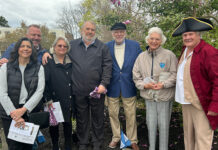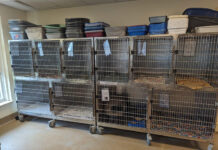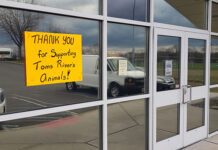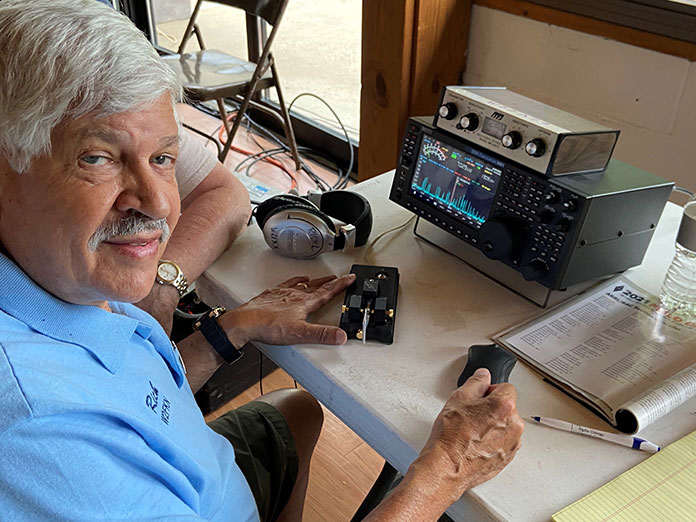
HOWELL – Despite starting the day with some showers, the Ocean Monmouth Amateur Radio Club (OMARC) hosted a successful Field Day, connecting to over 40 states in America and parts of Canada through airwaves.
The OMARC was founded in 1977 and serves Ocean and Monmouth Counties. Field Day is the most popular on-air event held annually where radio amateurs gather with their clubs, groups or with friends to operate from remote locations. Although part of the event is a contest where clubs compete to contact as many other stations as possible, others use it to learn how to operate radio gear in unusual situations and use the day as an opportunity to practice their emergency response capabilities.
This year, OMARC held their Field Day event at Echo Lake Park, having multiple antennas set up outside and other equipment inside due to the rain. Denis O’Brien, who’s been the president of the OMARC since 2002, explained how the event will run for 24 hours non-stop, and will use multiple different types of radios to demonstrate how to connect with others.
“I’m on solar power, so there’s no electricity involved. Very low power transmits, so it’s meant to be like simulating an emergency situation,” OMARC member Scott said.
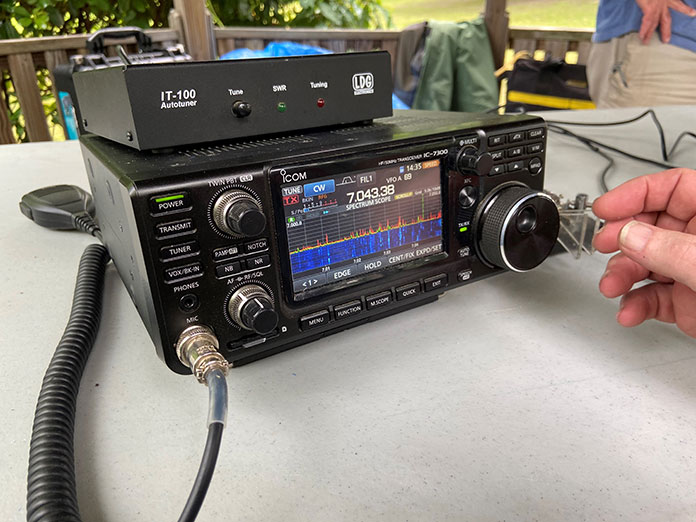
“If we happen to lose all communication and no power, we have the ability to set up antenna in an emergency,” O’Brien said. “That’s what Field Day is all about, it’s a simulation of an actual emergency. We’re here to help. And it’s also fun for us, we get to use our radios.”
“I used to work on a ship as the ship’s radio officer. That’s how I got interested in this. As a radio officer, I was responsible for if the ship was going down, I had to take the radio to the life boat,” O’Brien said.
The OMARC currently has around 50 members who are licensed operators. Those members have the option to upgrade their license, reaching a higher class allows them to use more of the frequency spectrum.
At Field Day, members use either morse code, digital nodes and regular voice devices, in total using four transmitters at the event. Outside at the edge of Echo Lake, O’Brien and two other members were operating a battery powered radio
“So, what you hear is some of these beeps are a high pitched or low pitched sound. He’s (Denis) tuning in and listening to just the one that he likes,” member David Drapkin said. “Denis heard the call from the other operator and he responded with our group ‘N2M0.’ The other person responded ‘N2M0 I recognize you’ and now it’s our turn. Denis then sent out the quality of the signal and our information like our club category and so on.”
Through this initial trial, O’Brien connected with two guys who were using two radios from a home location in Illinois.
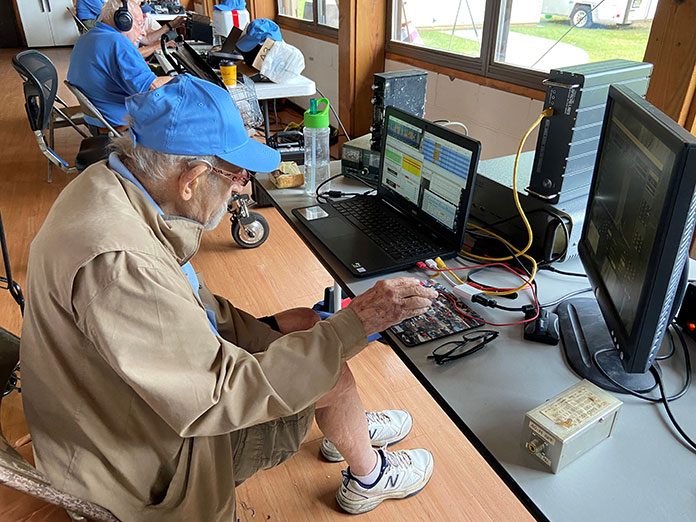
“After both sides have confirmed communication, the club logs the info and enters it into the record. When they’re all done, they tally it up,” Drapkin said.
O’Brien went on to discuss how he’s been able to connect with hundreds if not thousands of people around the world through radios.
“When I was testing this morning, I was talking to a guy in France. In the past I’ve talked to Australia, New Zealand and more. The radio propagation has to be just right, so it doesn’t happen every day. Right now, we are coming out of the low part of the solar cycle. The solar cycle is every 11 years. We are just coming out of the bottom and move up. So, things are getting better, but not perfect. They will in a couple of years,” O’Brien explained.
“It’s really out of our control. All we can do is recognize when things are rooting for us to get long distances and we go after it,” Drapkin said. “Denis is using an antenna that is a basic wire antenna and has a single strand of wire on each side. With the big antenna we have, having three elements in a row like that end up like a magnify glass and they multiple the power, being a directional beam antenna. The idea is that we steer it and becomes highly focused. You can’t hear it from the sides, but it sounds like you have more power. That way you can reach even further distances… even on days when the atmosphere isn’t working its best for our needs. Just by having a bigger antenna, it allows us to go further distances.”
Last year, Field Day still took place despite the coronavirus pandemic. Although members and visitors could not meet up, they had to operate on their own and at the end they combined their scores.
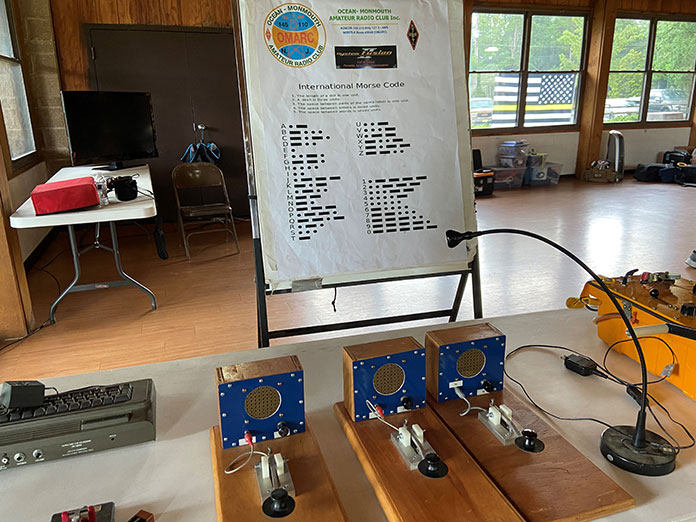
“There’s so many other facets to amateur radio besides the long-distance communication. There’re folks who join just to computer chat using radio, not connected to the internet. You build a network outside of the world network and it’s just radio to radio, but there’s computer’s instead of microphones and instead of morse code,” Drapkin said.
Not all radios have to be big in order to talk to someone. Something as small as a walkie-talkie radio can be used to connect.
“This idea of using this small radio (walkie-talkie), we don’t have to talk very far. All you have to do is reach the repeating station. The station will take your signal high into the air and send it out to a much broader area,” Drapkin said.
After the 24 hour-long Field Day, they club reached over 40 states in America and also parts of Canada, as they displayed a map tracking where each member had connected to.
The OMARC holds meetings on the second Saturday of each month at 9 a.m. at the Spring Lake Heights Volunteer Fire Company Number One, located at 700 Sixth Avenue in Spring Lake Heights, in the second floor meeting room. They also get together every Saturday morning at 9 a.m. and on the second and fourth Wednesday evenings at 6 p.m. at the firehouse. They are currently are transitioning back to in-person meetings at the fire house meeting room and the radio room in the basement, with a combination of in-person and zoom gatherings. If you are interested in joining, email Joe Kruszewski at Joekru1@hotmail.com.
To learn more about the OMARC, visit n2mo.org. To learn more about Field Day, visit arrl.org/Field-Day.

